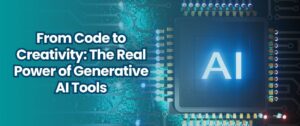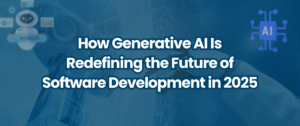Building AI-Enhanced Prototypes: Tips and Best Practices

🚀 Introduction
Ever felt like your prototype is missing that spark? That magical element that makes it smarter, more intuitive, and a step ahead of user expectations? That’s where AI-enhanced prototypes come in. Whether you’re a developer, designer, or product manager at Codeed or beyond, learning how to build AI-infused prototypes can seriously up your game.
Let’s talk real value here — smarter design, faster iterations, and happier users. Sound good? Let’s dive in.
🤖 Understanding AI in Prototyping

What is an AI-Enhanced Prototype?
AI-enhanced prototypes are early-stage digital models of your product that integrate artificial intelligence to mimic behavior, automate tasks, and generate insights. Instead of just simulating clicks, they simulate intelligent user flows.
Traditional vs AI Prototyping
Traditional prototypes are static. AI prototypes? They’re dynamic, adaptive, and context-aware. Think of the difference between a paper map and Google Maps — that’s the power of AI.
💡 Key Benefits of AI-Enhanced Prototyping
Speed and Efficiency
AI cuts down development time like a ninja. It helps automate repetitive tasks, predict behaviors, and generate data-driven interfaces.
Smarter User Feedback
Your prototype learns as users interact. Imagine testing a chatbot that improves itself during testing? That’s next-level user feedback.
Predictive Modeling
With AI, you can predict user behavior — clicks, drop-offs, or purchases — before even launching the MVP.
🛠️ Essential Tools for AI Prototyping
AI Frameworks
- TensorFlow, PyTorch: Best for custom ML logic.
- scikit-learn: Good for quick AI-driven decisions in UI/UX.
No-Code / Low-Code Platforms
- Bubble, Adalo, Glide now offer AI integrations.
- Perfect for founders or designers without heavy coding skills.
Design + AI Tools
- Uizard, Figma AI Plugins, and Framer let you bring your design to life with AI-generated suggestions.
🧭 Getting Started with AI-Enhanced Prototyping
Set Clear Objectives
Start with the problem. What user experience are you trying to improve with AI? Don’t just use AI for the hype — solve a real pain point.
Choose the Right Tech Stack
Match your idea with tools that fit your team’s skillset. Codeed, for instance, often uses React, Node.js, and Python with TensorFlow for powerful builds.
Work with Real Data
AI needs data like a car needs fuel. Use real, anonymized data for training and simulation — it’ll make your prototype feel alive.
🔁 The Codeed Way: AI-Prototyping Workflow
Agile + AI Approach
At Codeed, we integrate AI modeling into Agile sprints. That means each iteration gets smarter — literally.
Team Collaboration
From UI designers to ML engineers, everyone has a seat at the table. Clear role delegation ensures the prototype evolves with harmony.
Iterative Testing
Every sprint ends with tests — usability, performance, and AI responsiveness — so we build fast without breaking quality.
🎨 UX and UI Considerations
Human-Centric Design
Just because AI is powerful doesn’t mean it should feel robotic. Keep interfaces intuitive and emotionally intelligent.
AI Should Empower
Don’t confuse users with too many automated decisions. AI should assist, not replace human choice.
Accessibility First
AI features should work for everyone, including users with disabilities. That’s not optional — that’s essential.
🚫 Common Mistakes to Avoid
Overcomplicating Things
Start with a simple AI feature — like auto-suggestions — before jumping into complex learning systems.
Ignoring Bias in Data
Bad data = bad decisions. Always validate training data to avoid reinforcing stereotypes or wrong behaviors.
Skipping User Testing
Just because your AI works, doesn’t mean users like it. Test with real users early and often.
✅ Best Practices for Success
Start Small
You don’t need full-blown AI. Start with an auto-complete, sentiment analysis, or product recommendation logic.
User Involvement is Key
The earlier you involve users, the faster your prototype becomes usable. AI thrives on feedback.
Measure Everything
From click-through rates to AI predictions vs. actual user choices — measure, iterate, repeat.
💼 Real-World Applications and Use Cases
Healthcare
Predict patient queries with AI-powered symptom checkers in prototypes.
E-Commerce
Smart product filters, AI-based recommendations, and search experiences that learn — all in the prototype stage.
Codeed’s Client Stories
One of Codeed’s restaurant tech clients used an AI-enhanced prototype for menu prediction. Result? 30% more upsells — before launch.
🔮 The Future of AI in Prototyping
Generative Design
Tools like Midjourney and ChatGPT APIs allow text-to-interface generation. Yes, you read that right.
Smart Interfaces
Imagine interfaces that adapt layout based on user mood — emotional AI is becoming real.
🔐 Security and Ethics
Protecting Data
Even in prototyping, data security matters. Encrypt, anonymize, and be transparent.
Ethical AI
Don’t build creepy features. Respect privacy, explain decisions, and ensure fairness in AI outcomes.
🎯 Final Thoughts
AI doesn’t replace creativity — it enhances it. And at Codeed Inc., we believe in building prototypes that feel smart, look good, and make users go “Wow, this gets me!”
Keep your curiosity alive, don’t be afraid to experiment, and remember — every great product starts with a brilliant prototype.
❓ FAQs
1. What is the first step in building an AI prototype?
Start by identifying the user problem and how AI can make that experience smoother or smarter.
2. Can non-tech founders build AI-enhanced prototypes?
Absolutely! With low-code tools and help from teams like Codeed, anyone can bring AI into their ideas.
3. How is AI changing the design process?
It’s turning it from static wireframes into intelligent, adaptive experiences — faster than ever.
4. What tools do Codeed Inc. recommend?
We love using a mix of Figma, TensorFlow, and Uizard — depending on the project’s complexity.
5. How long does it take to build an AI prototype?
Anywhere from 1–4 weeks for a basic prototype. Complex ones with custom ML might take longer.
Table of Content
 5.0
5.0
Unlock your new design team today
Get a team of skilled professionals and all the benefits that come with top-grade in-house designers—for a flat fee.
Book a free call


